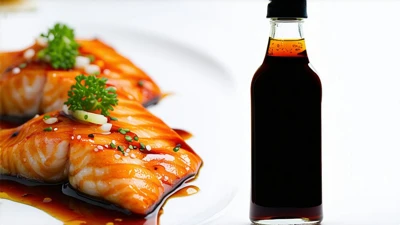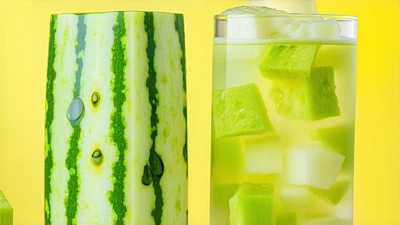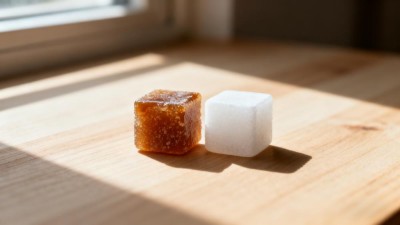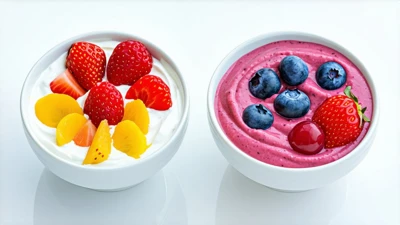
Fish Sauce vs. Worcestershire Sauce: A Culinary Competition
Fish sauce and Worcestershire sauce are both umami titans whose influence has shaped cuisines around the world for centuries. Although each adds depth and complexity to food, they differ dramatically in their origins, ingredients and uses. This article explores the data, cultural significance and practical applications of each, so you can determine what belongs in your pantry.
Nutritional Comparison
Let's start with the numbers. Here is a breakdown of per tablespoon (15ml) nutrition values:
| Nutrient | Fish Sauce | Worcestershire Sauce |
|---|---|---|
| Calories | 10 | 10 |
| Sodium (mg) | 960 | 180 |
| Protein (g) | 1 | 0.2 |
| Carbohydrates (g) | 0.5 | 3 |
| Sugars (g) | 0 | 2 |
Source: USDA FoodData Central
Takeaway: Fish sauce contains more sodium and protein, Worcestershire has more carbs and sugars.
Key Ingredients
Fish sauce: Anchovies, salt and water, fermented for 12–18 months.
Worcestershire Sauce: Anchovies, vinegar, molasses, sugar, garlic and tamarind.
Personal Opinion: Worcestershire relies on fermented spices for umami that's balanced by the tangy, sweet edge of the molasses and tamarind, while fish sauce is umami through and through because of fermentation.
Sodium Content: Which Sauce Contains More?
The sodium difference is clearly stark. Fish sauce has 5x as much sodium per tbsp as Worcestershire (960mg vs 180mg). To give a sense of scale, the American Heart Association recommends ≤1,500mg/day for optimal heart health.
| Sauce | Sodium per Tbsp | % Daily Value (FDA) |
|---|---|---|
| Fish Sauce | 960mg | 40% |
| Worcestershire Sauce | 180mg | 7.5% |
Tip: Use in moderation in dishes, particularly for those concerned about blood pressure.
Umami Power: The Edge of Fish Sauce
The fermentation process for fish sauce breaks fish proteins into glutamic acid, which is also what MSG is made of. This makes it a "secret weapon" for savory depth in foods like Vietnamese pho or Thai larb.
Foundational Flavor: Worcestershire Sauce
Worcestershire's combination of sweet, tangy and savory notes makes it versatile. It makes Bloody Marys, chili and even steak marinades better. Its acidity also counters rich flavors.
Some Flavor Profiles: Salty vs. Tangy-Sweet
Fish Sauce: Salty, stinky and extremely savory.
Worcestershire: Sweet, tangy, with a slight umami kick.
Analogy: Fish sauce is the strutting, bold bass note; Worcestershire is the swelling chord of harmony.
Tasting Notes: Cooking: Elements of the East and West
Fish Sauce: Originated in Southeast Asia (Vietnam, Thailand) >2,000 yr ago.
Worcestershire Sauce: Developed by people in 19th-century England following Indian recipes.
Fermented Fish – Health Benefits
Probiotics that support gut health are found in fermented fish like fish sauce. Research in the Journal of Food Science underscores its antimicrobial effects.
Health Aspects of Worcestershire Sauce
While lower in sodium, Worcestershire is typically loaded with added sugars and preservatives. Choose brands low in additives.
Audience Comparison
Fish Sauce: A mainstay of Southeast Asian cooks and wild eaters.
Worcestershire Sauce: A standard condiment in Western kitchens, especially BBQ and cocktails.
Types of Each Sauce
Fish Sauce Varieties: Vietnamese nước mắm (lighter) and Thai nam pla (saltier).
Worcestershire Sauce: Classic (Lea & Perrins) vs. modern low-sodium/gluten-free versions.
Cooking Applications
Fish Sauce: Use in stir-fries, soups, or dipping sauces. 1 tsp is a good place to start so it doesn't overtake.
Worcestershire Sauce: Seasoning for marinades, stews or Bloody Marys.
Substitute Options
Fish Sauce: Soy sauce + lime juice
For Worcestershire Sauce: Soy sauce + balsamic vinegar + sugar.
Iconic Recipes
Fish sauce: Vietnamese pho, Thai pad Thai.
Worcestershire Sauce: Classic Caesar Salad, Beef Wellington.
Fermentation's Role
Fish sauce's 12–18 month fermentation deepens its flavor, whereas Worcestershire's shorter process gets its tang from vinegar.
Shelf Life & Storage
Fish Sauce: Store unopened for 2–3 years; refrigerate once opened.
Worcestershire Sauce: 1–2 years shelf-stable; refrigeration not needed.
Cost Comparison
Budget: Fish sauce ($3–5 for 17oz.); Worcestershire ($2–4 for 10oz.)
Premium: Handcrafted fish sauce ($10+); organic Worcestershire ($6+).
Global Availability
(You can find fish sauce in almost any Asian market and Worcestershire in most Western grocery stores.)
Dietary Alternatives
Vegetarian alternative: Umami sauces made with mushrooms or coconut aminos.
Gluten-Free: Read labels; many brands carry GF varieties.
Pairing with Proteins
Fish Sauce: Seasoning for seafood, tofu, and chicken.
Worcestershire Sauce: Aged for its beef, lamb, and vegetarian lentil compliments.
Cultural Significance
Fish sauce is central to Southeast Asian identity, Worcestershire an emblem of British culinary ingenuity.
Use in Marinades & Dressings
Fish Sauce: Combine with lime, garlic and sugar for a Vietnamese dipping sauce.
Worcestershire Sauce: Mix with olive oil and herbs for a steak marinade.
Sodium & Blood Pressure
A high amount of either sauce can influence blood pressure. Use it in moderation — cut back on added salt elsewhere in the dish.
Modern Fusion Trends
Now chefs mix both sauces in dishes such as umami burgers or soy-Worcestershire glazes, highlighting their complementary strengths.
Personal Opinion: I love a drizzle of fish sauce in ramen for an umami bomb, or Worcestershire in my barbecue sauce for complexity.
Conclusion
You should choose fish sauce or Worcestershire depending on what you want to achieve in the kitchen. Fish sauce provides brash, true-to-Southeast-Asian flavor, while Worcestershire gives depth and complexity with great versatility. Having both in your kitchen is more complementary than competitive.
What sauce do you turn to most often in your kitchen? Share your thoughts below!

















